Hello, world!
We are Francesc Giménez and Núria Samsó, head teacher and pedagogical coordinator at Institut de Gurb (Barcelona, Spain). We’ve been travelling again! This time, it was for a very specific Erasmus+ project about cooperative learning. As you may know, cooperative learning is one of the main characteristics of our educational project. We wanted to learn more about it, and see how different schools in different countries plan and implement it, always with the objective of improving it in our school. That’s why we asked for this Erasmus+ project.
The first trip has been to Rome (Italy). We’ve been there from the 16th to the 23rd of April 2023, and we’ve visited a school called Instituto Instruzione Superiore Via Carlo Emery, 97, situated in the outskirts of this ancient city.
The Italian education system
Talking to our colleagues in Rome, we’ve discovered that the Italian education system is organized in the following way:
- 0-3 years old: nursery. Free for the families with low incomes or socially disfavored, but expensive for the majority.
- 3-6 years old: kindergarden. Free.
- 6-11 years old: primary school.
- 11-14 years old: 1st grade of secondary school. There is a national exam when they finish. When they finish, they choose the school where they are going to study afterwards.
- 14-19 years old: 2nd grade of secondary school. They can choose between:
- Liceo. It’s 5 years, the first 2 are compulsory. Types: sciences, classic, languages or social. When they finish, they have to go to university.
- Instituto Tecnico. Specialities. The first two years are general, and they choose a speciality on the 3rd year. The school we are visiting is one of these and it has 4 specialities: business administration, business administration with sports, ICT and International relations. Afterwards they can go to work or to university.
- Instituto professionale. Oriented to work.
About the school
Instituto Instruzione Superiore Via Carlo Emery, 97 was founded in the school year 2014-15. It includes two locations: the “Piero Calamandrei” Economic Technical Institute, located in via C. Emery 97 and the “Stendhal” Professional Institute, located in via Cassia 726.
The “Piero Calamandrei” Technical Institute, which is the one we are visiting, is the only Technical Institute – Economic sector of the 20th district, with the specialization “Administration, Finance and Marketing” and the divisions “Corporate Information Systems” and “International Relations for Marketing”. It is located in the northern area of the city, an area characterized by a dynamic business network in the secondary and advanced tertiary sectors: it is precisely from these sectors that the greatest requests for training come from, to which the school intends to provide adequate responses. In fact, for over a decade the school has maintained institutionalized relationships with orientation centres, universities, training bodies and, above all, with companies and associations operating in the territory, both to carry out PCTO experiences (formerly School-School Alternation Work) and to facilitate the insertion of graduates into the workplace.
The school has a sports section which is very active. The organizational flexibility provided by school autonomy allows the creation of study plans with modules for in-depth study of sports sciences and culture, with the aim of learning and consolidating sports techniques or obtaining patents and federal qualifications.
In the two locations there are evening courses for the education of adults and workers. Moreover, the school has an inclusive vocation towards pupils with special educational needs (DVA, DSA, NAI) and has a branch in the Gemelli Polyclinic hospital in Rome.
Diary of our visit
Monday, 17th April
Today we arrived at the school at about 11 o’clock and we met Mrs. Orietta Vozzi, one of the teachers who leads cooperative learning in the school, and Mrs. Federica Andreoli, a Spanish teacher there. They showed us around the school, they introduced us to the headmistress, Mrs. Annamaria Logoteta, and they told us about the Italian education system and about the school where they work. We finished our day with a good idea of where we are what they do here.
Tuesday, 18th April
In the morning we had a meeting with Mr. Luciano Mollica, responsible for inclusion, and then we attended a couple of classes:
- Inclusion. We’ve seen that they distinguish between students with disabilities and students with special educational needs. In the school there are 21 students with disabilities. The health system is the one who decides which support they need depending on their disability. The government assigns these support depending on the number of students with disabilities each school has. In this school they have 18 people working exclusively for the inclusion of these 21 students (14 teachers and 4 assistants).
- English class 3E. There were only 11 students in this class. They were Business Administration students. The class was in the languages lab. There was the English teacher and a lab technician who controlled the space. In the lab, apart from the students of the English class, there were other students and teachers working. The English teacher proposed an activity in teams. The project was called There’s No Planet B. She formed groups with 4 students in each group and gave a role to each of them: 1 was in charge of writing the information, 1 was in charge of scanning the QR codes and 2 were in charge of doing research on the Internet. The students had to scan the QR codes they could find on the walls. Those QR codes brought them to some questions about citizenship. They had to look for information about the question (in English) ans write down the answers in a document (in English as well). At the end of the class, they had to send a document per group to the teacher. There were 8 questions. Each correct answer was 1 point for the group, and the first group to finish had 2 extra points. All the members of each group had the same mark. The teacher said they would read aloud the answers on the next class. The students who finished before were asked to calculate their ecological foodprint. It was a difficul group. The students were 17-18 years old and some of them didn’t behave well. One of them was asked to abandon the class, but he soon came in again. In that class we doubted about the teacher’s authority.
- Law or Political Economy 4A. In this class we could see real cooperative learning. At the beginning of the class, the teacher formed the groups. Each group was formed like a menu: there was a starter, a first course, a main dish and a dessert. The teacher gave a paper with one of these roles to each student. Strategically, she gave the same role to all the students of the same level. For example, all the starters were low-level students. Once they had the papers, they had to create the groups themselves, making sure there was a starter, a first course, a main dish and a dessert in each group. This way, the teacher could make sure the groups were heterogeneous. After that, she asked the groups to choose a name for their restaurant. While they were choosing the name, she went group by group to explain the roles they had. One of them was in charge of writing down all the work. Then, she asked each group to write the name of the restaurant and the name of the students with their roles in a piece of paper. She collected the documents and put them on her table. After that, she gave them the topic of the activity, which was enterpreneurship. Each group had 7 minutes to do research about this topic. They could use their class notes (everything they were going to be asked later was done in previous lessons) or the Internet. After these 7 minutes, she called one of the roles (for example, starters) and she gave them a question with different answers that they had to answer individually. All the questions were about enterpreneurship. The individual answers gave marks to the group. The teacher wrote down the correct answers in the document of each group. The winner was the group with more correct answers. This activity was a little complicated at the beginning, because the students were not paying too much attention and they did not understand the activity. Once the activity was understood by everybody, it worked well.
Then we had lunch at the school canteen with Mrs. Orietta Vozzi and Mrs. Federica Andreoli.
In the afternoon, we had a meeting with some teachers and with the school principal. We presented our school and its educational project and we discussed some of the items that define it: cooperative learning, mentoring, competence-based learning, assessment, school organization, school projects (linguistic project, STEAM project, participation project, artistic project and sports project) and inclusion.
Wednesday, 19th April
Today we could see an activity called IoNonOdio, we had a meeting with the school headmistress and we visited a French class:
- Activity IoNonOdio: an external organization called FareBene, which works with all the schools in the country, goes to the schools to deal with different topics with the students, such as bullying, ciberbullying, gender-based violence, etc. Today they came and the did a workshop about the dangers of Internet and social networks.
- Meeting with the school headmistress. We had a conversation with Mrs. Annamaria Logoteta, the school headmistress, and we learned about different aspects:
- Teacher training. The teachers do training courses individually (it’s not the school who chooses or organizing these courses). There is a compulsory one about security.
- School organization. They have different departments (one for each subject): Languages, Maths, Science, Economy, Business Administration, etc. They have meetings once in every month and a half, approximately. They also have commissions: school trips, inclusion, improvement, finances, sports, antibullying, etc. These commissions meet when there is something to discuss.
- Management team. There is the headmistress, the deputy headmistress (one in each school) and a head of studies (who deals with teacher absences).
- School council. There is the headmistress, 8 representatives for the teachers, 4 for the families and 4 for the students. They meet regulary, when it is necessary (approximately once a month).
- Collegio docenti (teaching staff). They meet approximately once in every month and a half. The headmistress makes proposals and the teachers vote. Before the meeting, the headmistress sends an email to all the teachers with the information so that they have information beforehand about what they have to vote. The headmistress said that it is difficult to deal with the teaching staff because the teachers are very demotivated in general. They do not earn much money, they are tired… They are not enthusiastic. It is difficult to find teachers who get involved in projects. For example, the Languages department has decided that they do not want to organize any school trips, because they do not want this responsability and because there is a lot of paperwork for everything.
- French 1A. The teacher created the cooperative groups before the class (with 5 students in each group). At the beginning of the class, she announced that today they are going to work cooperatively and she organized the class in groups. Then she explained the activity: they had to decide what they wanted to know about their classmates (for example, favourite colour, favourite animal, favourite sport, favourite food, favourite subject, etc.). Then, she gave them roles and she assigned them herself: 1 student was in charge of asking the questions to the members of his/her group; 1 student was in charge of writing the answers; 1 student was in charge of looking up new words in the dictionary; 1 student was in charge of asking the question to the other groups; 1 student was in charge of graphing the answers. It took her a long time (more than half an hour) to organize the group and explain the activity. Then it worked. When they finished, the students were asked to write a title and prepare the explanation of the results for the rest of the class.
Thursday, 20th April
Today we attended two classes (Business Administration and Spanish) and then we prepared a cooperative activity for one of the groups.
- Business administration 4B. The teacher gave the students a document with 4 exercices on Economy. He used the experts groups technique. Each experts group did one of the exercises. After that, the students went back to their original groups. Each member explained the exercise to the other students in his/her group and they created a document per group with the answers to all the exercises. This task was going to be assessed, with an individual mark for th exercise they did individually and a group mark for the whole document.
- Spanish 3E. The teacher organized the class in groups of 3. She started the class presenting the objectives (all of them related to leaning about fair trade) and she gave the students photocopies about this topic. There were three texts (A, B, C). She gave a different text to each student in a group. Then she asked the students having text A to sit together, and the same with texts B and C. She gave them 5 minutes to read the text individually in silence (she projected a stopwatch). Then they could share information about the text. If there was a word they did not understand, they could help each other. After that, they got back to the original groups and each student explained the text to the others. Each of them had to take notes about the content of each text. Finally, they had to discuss about what they had learned with the different texts.
- Cooperative learning lesson 4D. We prepared a lesson about cooperative learning, with an activiy of group formation and two main cooperative techniques:
-
- Group formation activity. As we didn’t know the students, we did a group formation activity which allowed us to create cooperative groups randomly. We asked the students to take off one of their shoes and put it in the middle of the class, and we created groups of 4 taking 4 different shoes randomly. We asked them to sit with those groups.
-
- 1-4-5 technique. We read them a list of words they had to memorize. Individually, they wrote all the words they remembered in a piece of paper. Later, in pairs they put the two lists in common, and finally they did the same in groups of 4. After the activity we could discuss the advantages of cooperative learning.
-
-
- Brainwriting technique. We gave them a situation: we want to create an internal communitary service in the school where we are. Following the brainwriting technique, they did brainstorming and they finished up planning a communitary service that they considered necessary for the school. We asked them to define the objective and the main tasks to be done.
-
Friday, 21st April
Today we attended the last two classes: Law or political economy and sitting volley.
- Law or political economy 5A. The teacher divided the students in groups. Each group had to prepare a scene with a specific content. In this scene there had to be an oppressor and an oppressed. The first group prepared and played a scene about alcohol and tobacco. The condition was that the story needed to have a negative ending. The first story finished up with the death of a young man. Then, the teacher asked them to play the scene again and she asked the rest of the students to stop the playing when they thought the story could be changed to provoque a happy ending. The students who proposed changes in the played were asked to take part in the scene. This technique is called teatro degli oppressi and it was born in South America to make peasants aware of the importance of having an active role to change negative situations.
- Sitting volleyball. We could see some students playing sitting volley, an inclusive sports that all the students enjoyed playing.
After that, we had a last meeting with Mrs. Orietta Vozzi and Mrs. Federica Andreoli. We drew some conclusions about our visit, we finished the Erasmus+ paperwork and we thanked them for the amazing week we spent there.
Our conclusions
In this school we visited in Rome we learned some interesting activities and cooperative learning techniques that we could share with the teachers in our school. Hopefully, some of them will be used in some of the classes at Institut de Gurb. However, in our school we are a step forward with cooperative learning, as we have a school plan for that. In Rome, some of teachers do cooperative learning activities, but it is not planned in the school level, and it is not one of the main features of the school or the most used methodology in their classes. In spite of that, we could share and discuss lots of things with the teachers who were using this methodology, and it was very enriching for us.
One of the most shocking things we saw in Rome was the diversity of students they have in ordinary schools. We could see students with severe disabilities in the classrooms. For example, in one of the classes there was a girl with down sindrome. That girl had the support of a teacher for herself, but she did not participate in the activities that were going on in the class. She did other things. For example, she showed us some posters she created in the Law class, while her classmates were doing other things. So we would say that in Rome they have more diversity than us in ordinary schools, but we doubt whether they are really included in the school activities.
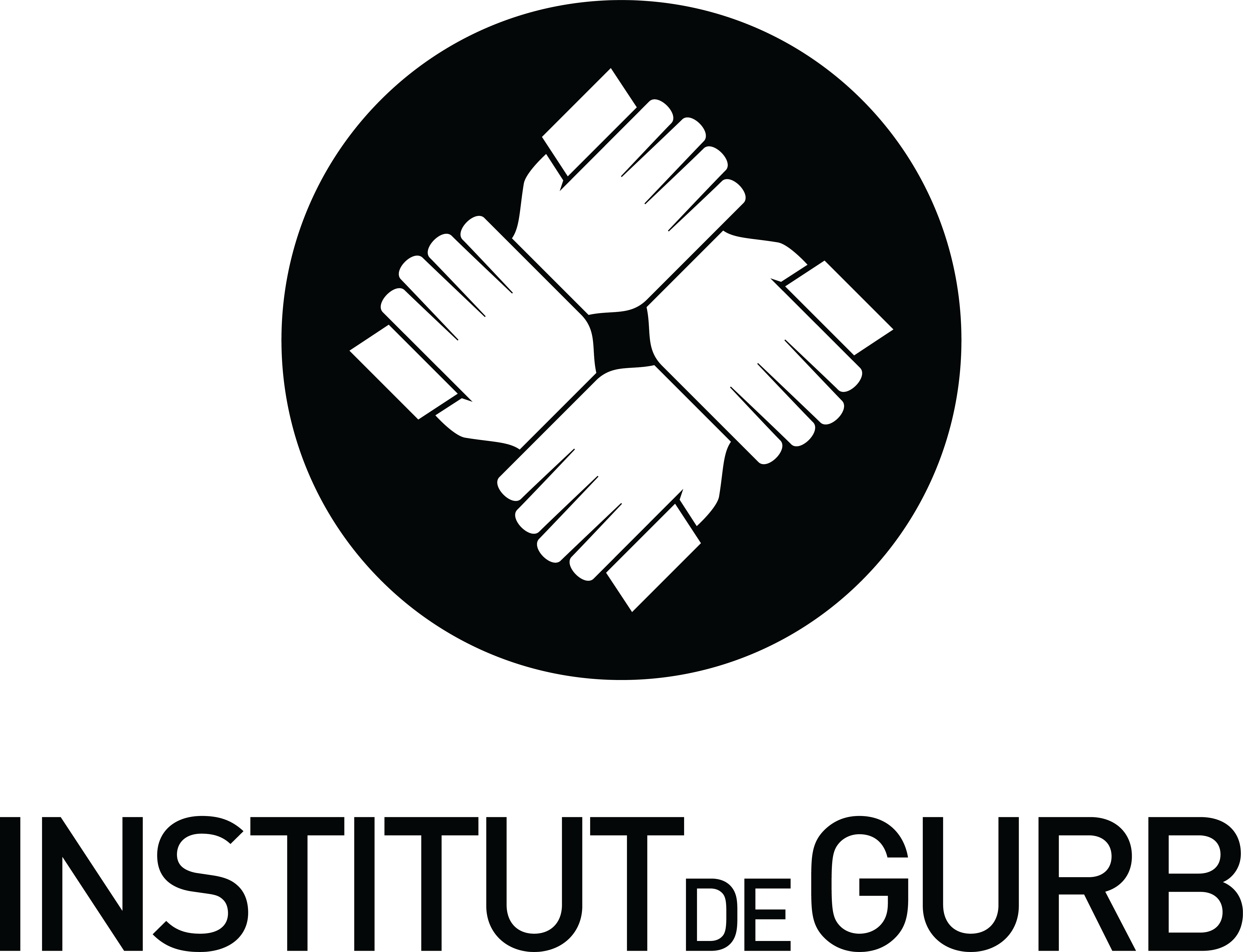
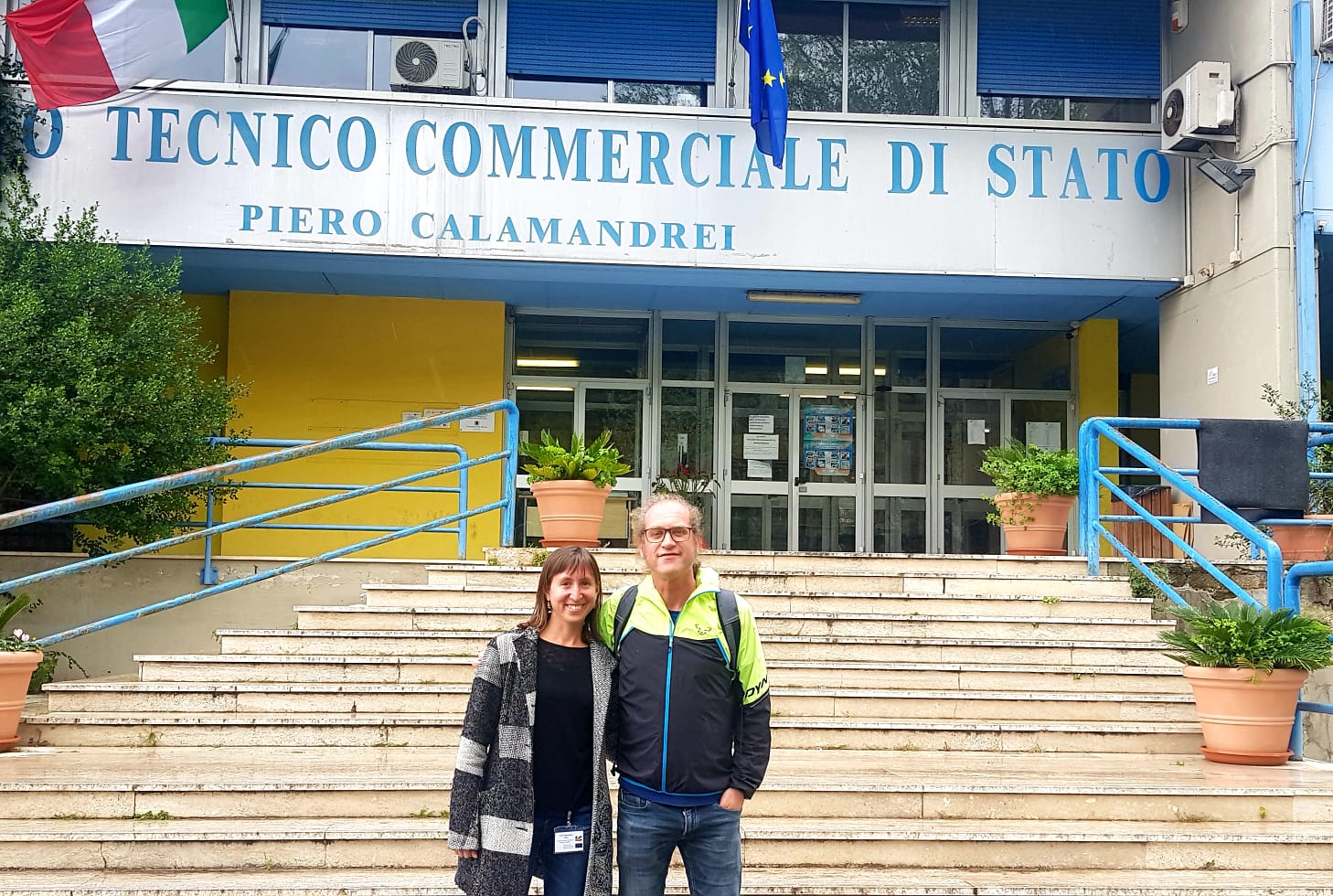

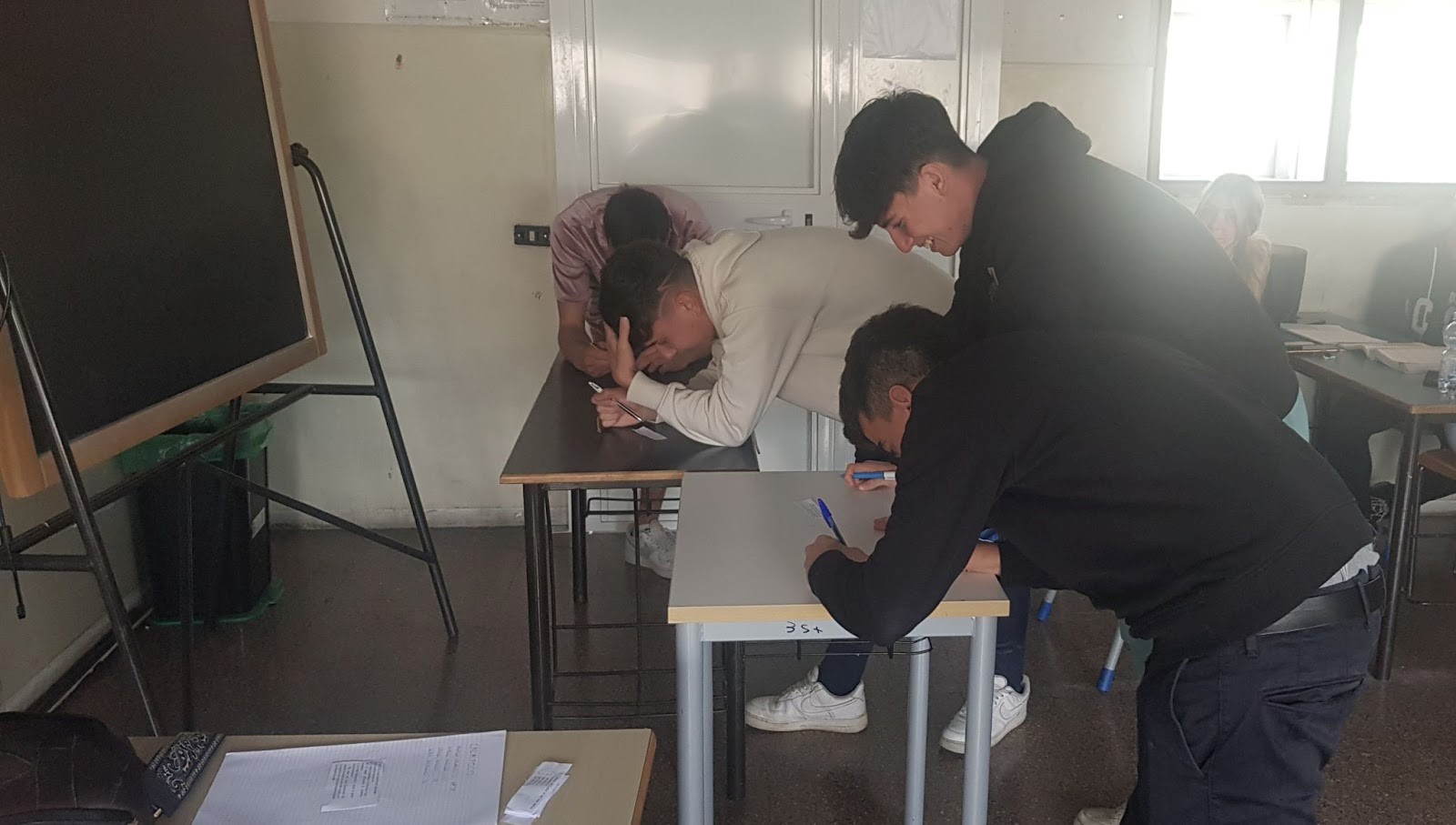

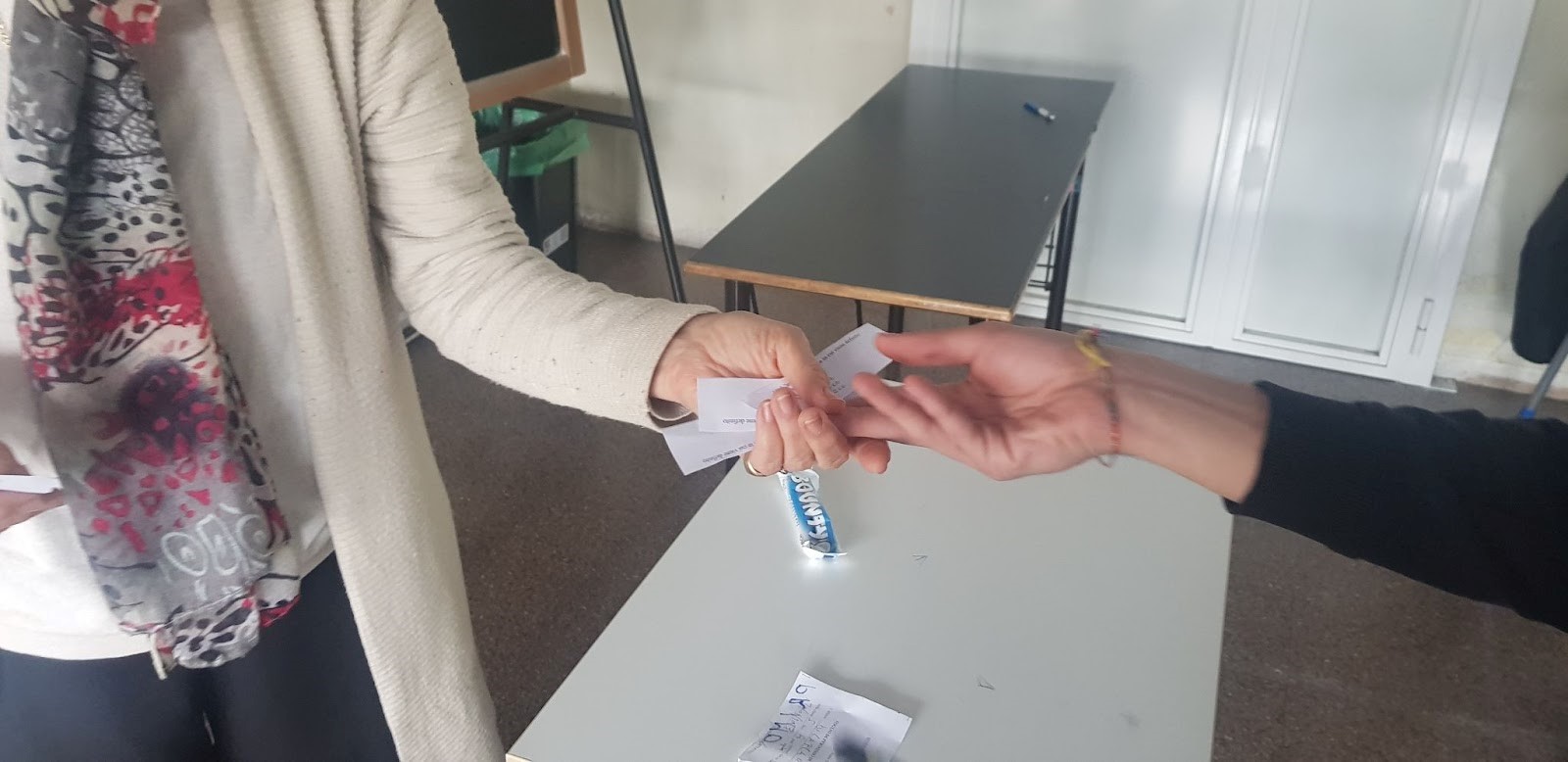
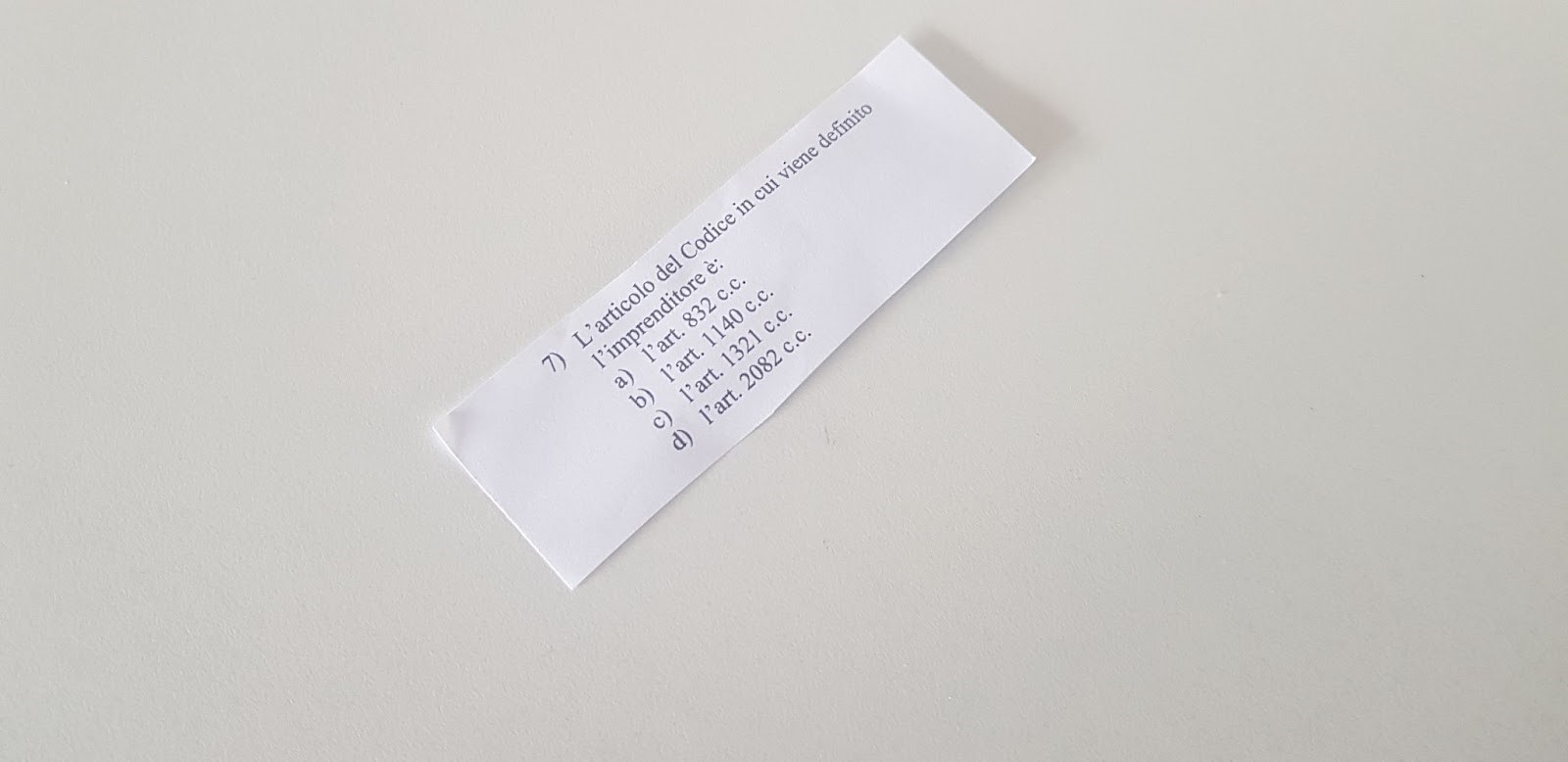




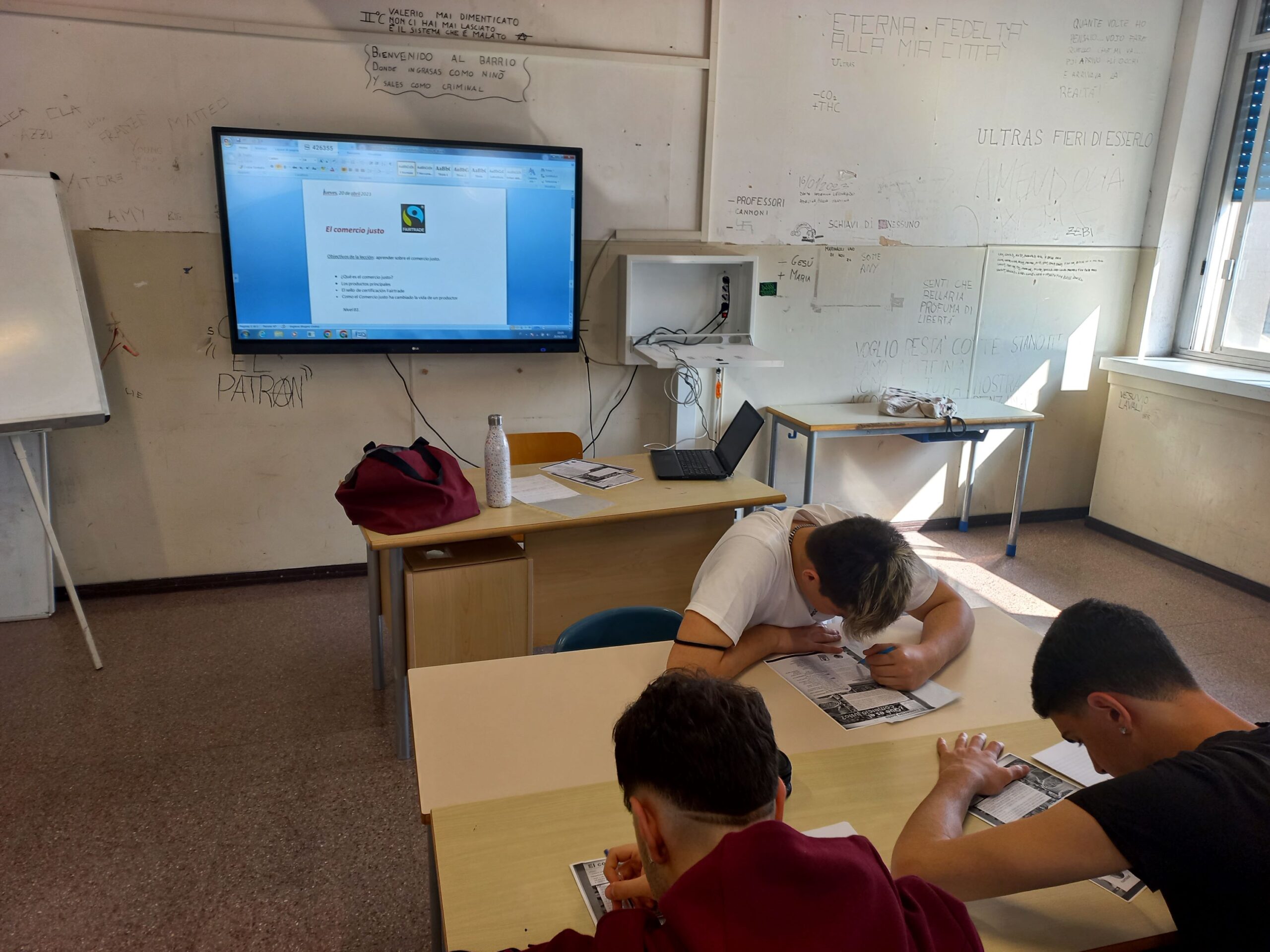

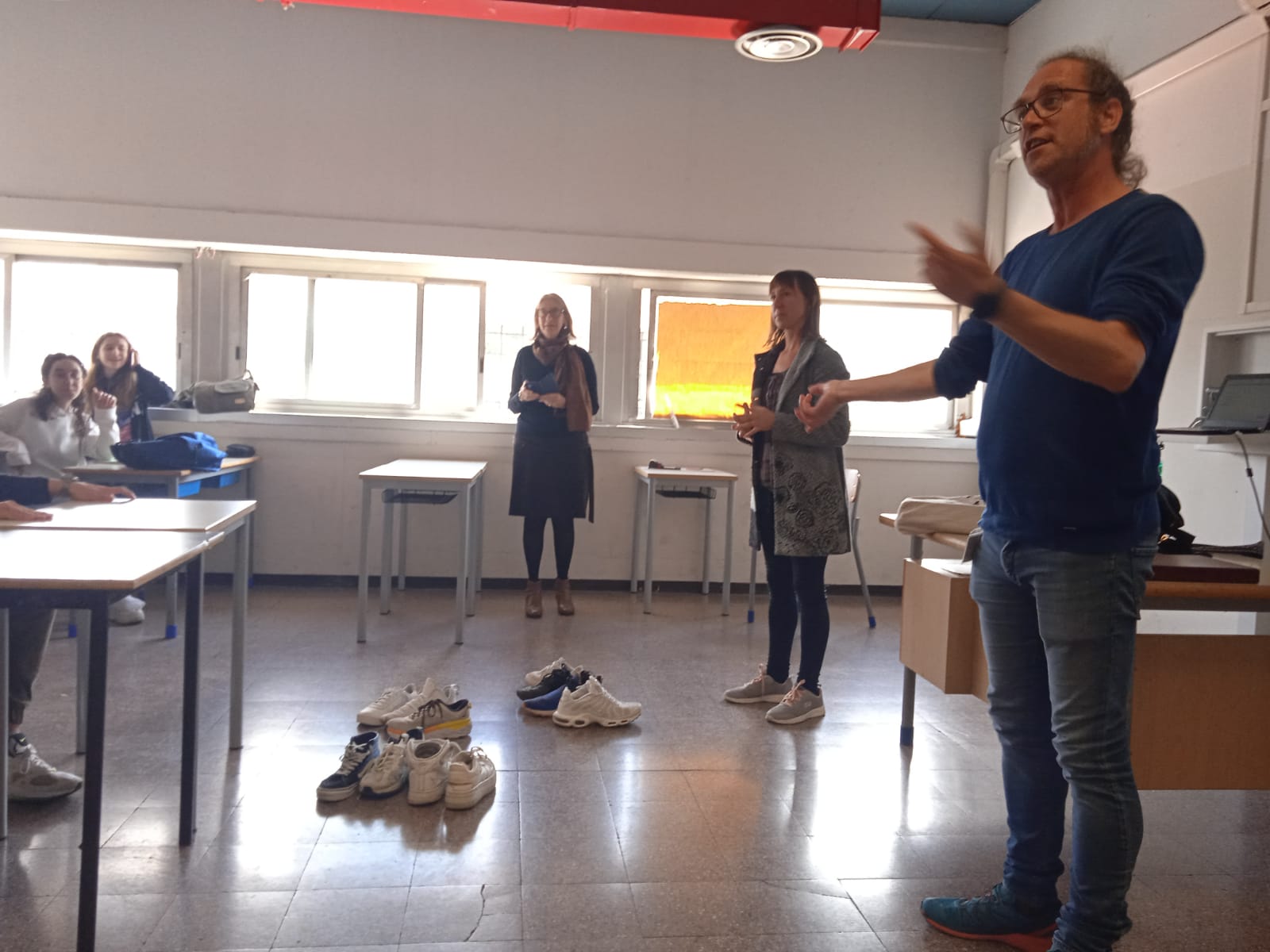
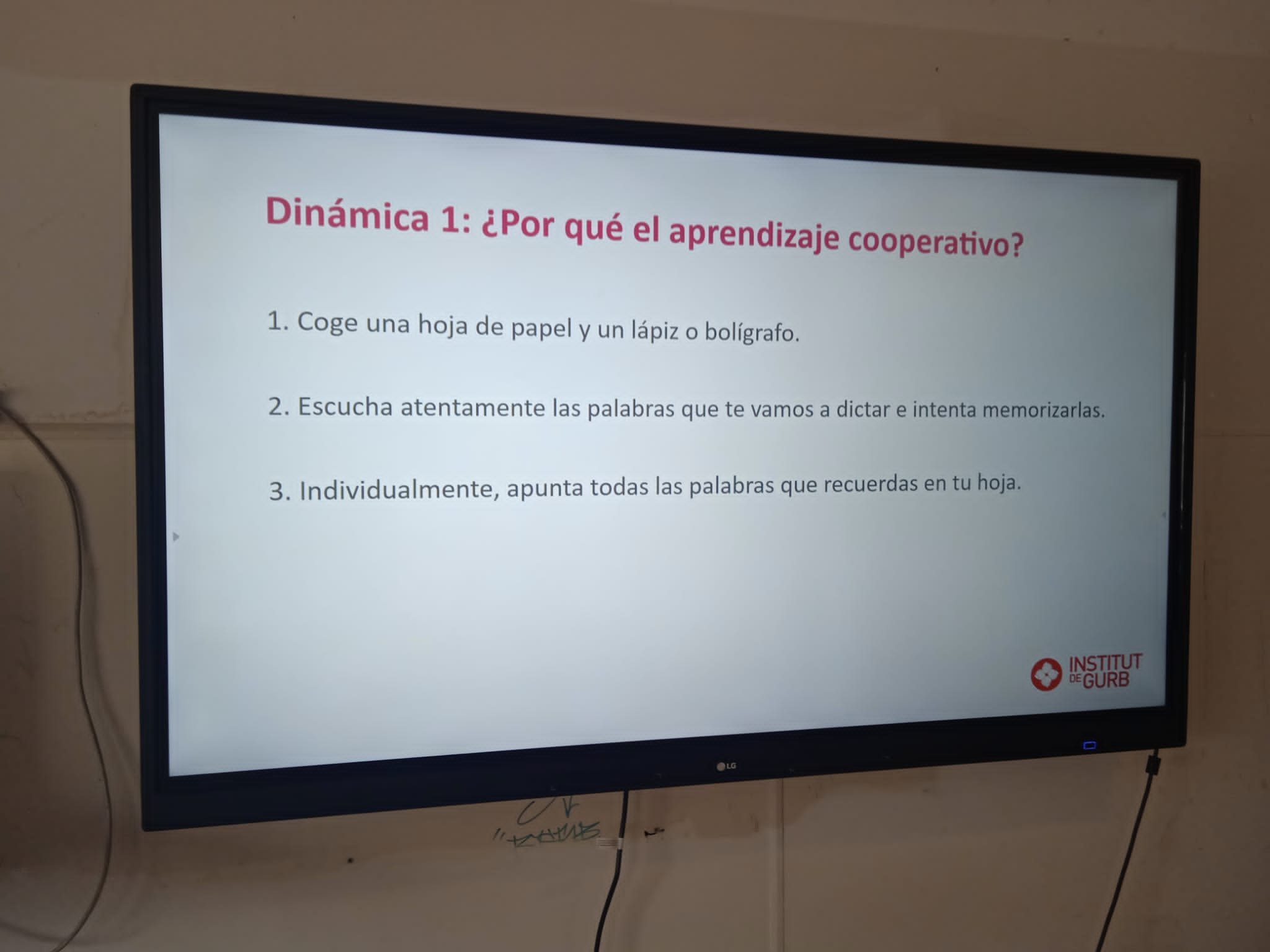







Segueix-nos!